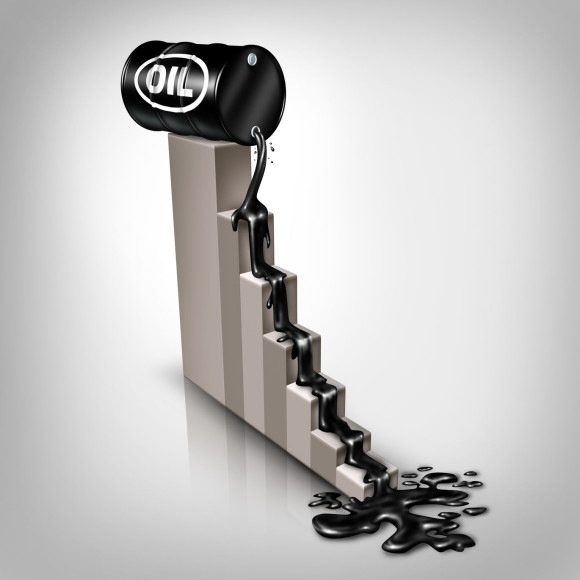The insurance industry is becoming the latest casualty of the oil price slump, with postponements and cancellations of energy projects forcing down premium rates and income in a market that was already crowded.
Insurers forecast income could dive by 20 percent or more, possibly forcing some players to quit the energy part of a business that has attracted new entrants hoping for better returns during the era of ultra-low interest rates.
While most energy companies renew their policies in the first half of the year, the effects of the worst oil downturn in decades are already being felt by insurers and reinsurers, who take on a share of the risk in return for part of the premium.
Hannover Re’s Chief Executive Ulrich Wallin used some understatement in describing how the low oil price and resulting cuts in exploration and production projects have diminished demand for insurance protection.
“It’s a little bit of a crisis,” Wallin told a conference last week. “We will see fierce competition … on pricing.”
Crude prices have tumbled 70 percent over the past 18 months to around $35 a barrel, leading to five of the world’s top oil companies reporting sharp declines in profits in recent days.
Energy firms have already laid off tens of thousands of workers and scrapped plans for mega projects that cost billions and take years to develop, as well as targeting further savings.
Nick Dussuyer, global head of natural resources at Willis Towers Watson, said some of the broker’s major clients had significantly reduced their insurance program limits, “with a corresponding dramatic reduction in premium spend.”
“If premium income levels continue to deteriorate, and capacity does not withdraw … at some stage this portfolio is bound to become unprofitable,” he told Reuters.
“It will be interesting to see at this stage which insurers will choose to withdraw and which will try and ride out the storm, anticipating a turning market.”
In recent years, high returns in insurance and reinsurance in comparison with government bond yields have attracted new investors, ranging from hedge funds and private equity to pension funds and insurers from newer markets such as China.
This had already driven up competition and put pressure on premiums in the broader insurance industry, even before oil prices began diving in mid-2014.
Insurers are also likely to have further exposure to the oil market via their investments in corporate bonds issued by energy firms, according to ratings agency Fitch.
Insurance Exposure
Investment into energy insurance continued even as oil firms began delaying or canceling projects, perhaps in the hope that the market would bounce back.
As a result, total capital available for insuring upstream risks – including around 3,000 offshore platforms around the world and supply equipment such as drill ships – have risen about 10 percent over the past year to about $7 billion, an industry source said.
A further $6 billion is estimated to cover downstream projects such as refineries and processing facilities.
However, the energy firms accept that prices may well stay low for some time and are scaling down their plans accordingly. Global oil and gas investments are expected to fall to their lowest in six years in 2016 to an estimated $522 billion, following a 22 percent fall to $595 billion in 2015, according to the consultancy Rystad Energy.
Simon Williams, from the International Union of Marine Insurance industry association, forecast “a tough time in the next few months.”
Williams, who is also head of marine and energy at insurer Hiscox, said the lower activity was likely to mean a sharp drop in the premium base compared with 2015, and estimated it could be as much as 20 percent.
“With more capacity having entered the energy insurance sector in recent years, it will be a real test to see how insurers adapt to this very challenging environment,” he said.
William Lynch, head of energy at broker Aon, said a potential 20 percent fall in premiums could prove to be a conservative estimate, given the drop in projects being carried out and overall lower rates.
Insurers are already suffering. Beazley said its energy business saw a 17 percent fall in rates in 2015, the strongest downward rating pressure of all its segments.
“Our expectation is it’s going to continue with further rate reductions this year,” Beazley chief executive Andrew Horton said.
(Additional reporting by Jonathan Gould in Frankfurt and Noor Zainab Hussain in Bengaluru; editing by David Stamp)
Was this article valuable?
Here are more articles you may enjoy.



 South Carolina Ringleader Sentenced to 8 Years for Staged Accidents
South Carolina Ringleader Sentenced to 8 Years for Staged Accidents  Fla. Regulators’ Effort to Remove Insurer Execs May Not Pass Constitutional Muster
Fla. Regulators’ Effort to Remove Insurer Execs May Not Pass Constitutional Muster  NC Agent, Missouri Lawyers Convicted in $4M Tax Shelter, Insurance Scheme
NC Agent, Missouri Lawyers Convicted in $4M Tax Shelter, Insurance Scheme  Billionaire Ellison Is Moving Oracle to Nashville From Texas
Billionaire Ellison Is Moving Oracle to Nashville From Texas 

